2022 Recap
2022 has been a historic year for both equity and fixed income markets as a majority of global central banks have continued to increase their benchmark interest rates to combat inflation levels that the market has not seen in decades. The result has been a substantial decline in value amongst major equity and fixed income market indices. However, even though volatility remains elevated, we believe opportunities are ripe. Investors may find that re-positioning portfolios by tax-loss harvesting can provide a multitude of benefits in today’s environment.
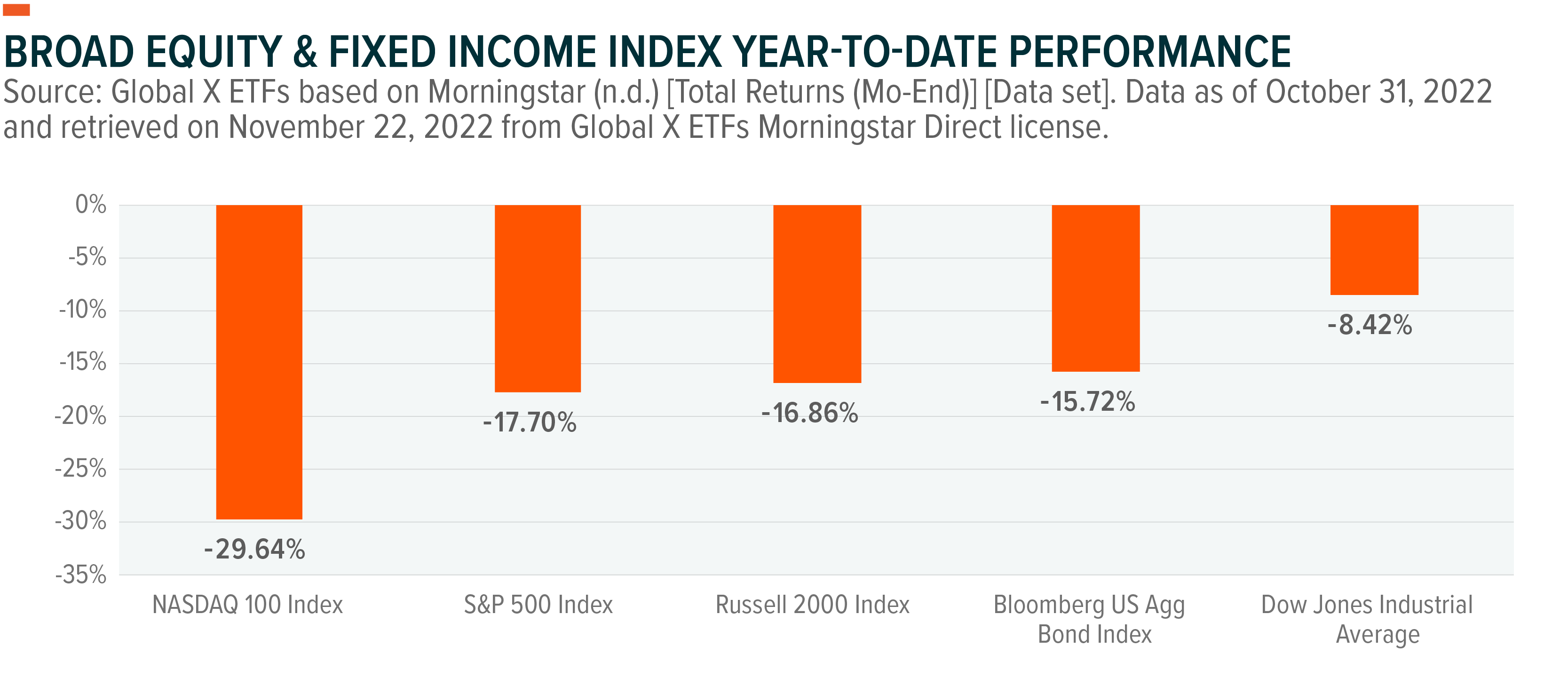
What Is Tax Loss Harvesting?
Tax-Loss Harvesting is a method of potentially lowering a year-end tax bill by deliberately selling portfolio securities that have declined to a value lower than an investor’s cost basis and replacing the sold security with another security of similar characteristics. Investors can offset a portion of their realized capital gains if the gains are higher than the realized capital losses to potentially lower their year-end tax bill. This is referred to as having a net capital gain. In addition to this, investors can have a net capital loss where their realized capital loss exceeds their realized capital gains to create a capital carryover.
Hypothetical Tax-Loss Harvesting Example – Below we show a portfolio of 2 holdings under the following scenario:
- Investment 1 has a $2,000 Unrealized Capital Gain
- Investment 2 has a -$4,000 Unrealized Capital Loss
If the investor were to sell both hypothetical positions, the -$4,000 realized capital loss would offset the $2,000 realized capital gain. This results in a -$2,000 net loss and can potentially lower the taxable income of this investor.
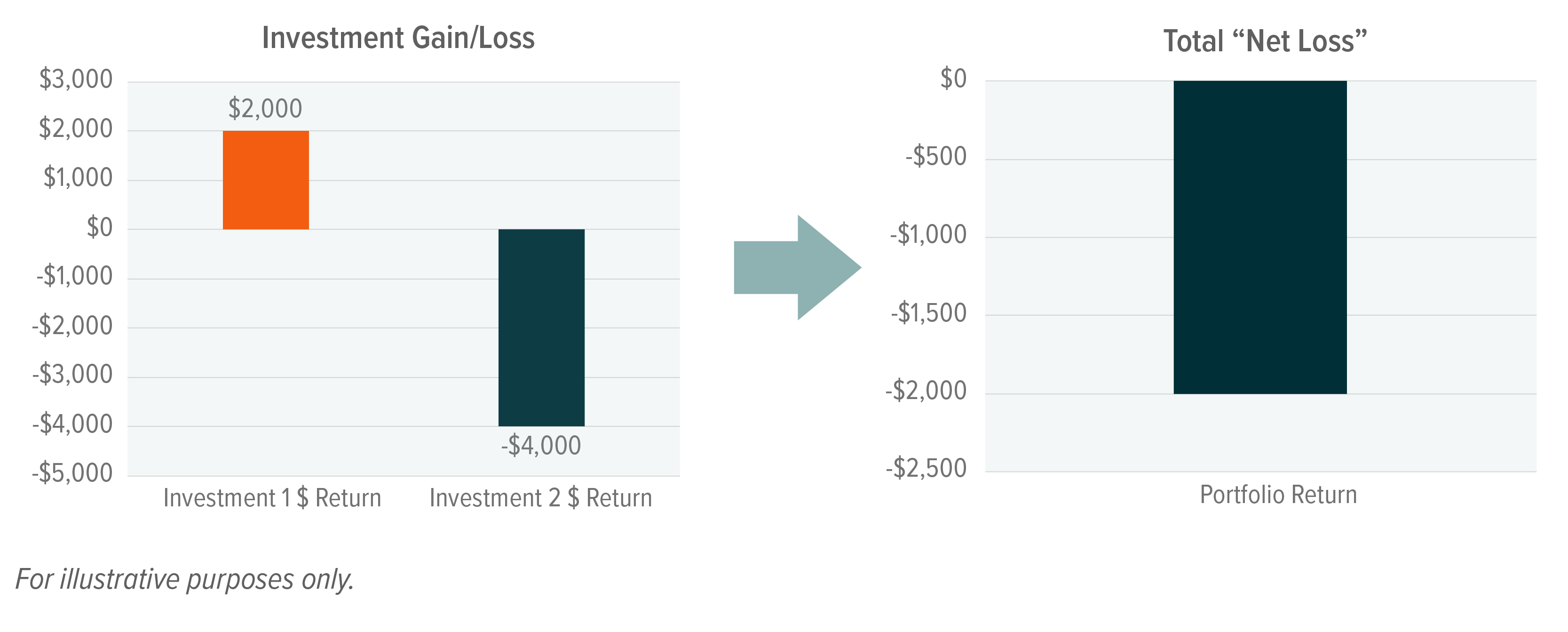
Current Potential Investment Opportunities
We think that given the downturn in markets this year, there are ample security replacement opportunities for investors who are initiating tax loss harvesting on similar assets, particularly within the growth oriented and interest rate exposed side of the investment universe. Below, we touch on a few ideas for investors to consider in the context of portfolio application once capital losses are realized. As always, you should work with your financial and/or tax advisor to see what makes sense for your situation.
Thematic Investing Opportunities
Lithium & Battery Technology
This theme remains a high conviction one for us with long-term growth potential given the important role lithium & battery technology plays within the electric vehicle evolution. With many traditional car companies seeking to transition their vehicle lineups to be mostly or all electric-based, the demand for lithium batteries and the lithium metal itself has increased. From January 2022 to October 2022 we’ve seen lithium carbonate prices hit record highs and explore these price dynamics here. The passing of the Inflation Reduction Act in 2022 has also provided positive support in the form of extended government tax credits that have the potential to increase EV demand further.3 Valuations continue to look attractive within the Lithium & Battery Tech theme and equities within the Global X Lithium & Battery Tech ETF (LIT) currently exhibit lower Price-to-Sales Ratios paired with higher 12-Month forward-looking growth rates when compared to the S&P 500 Index.4
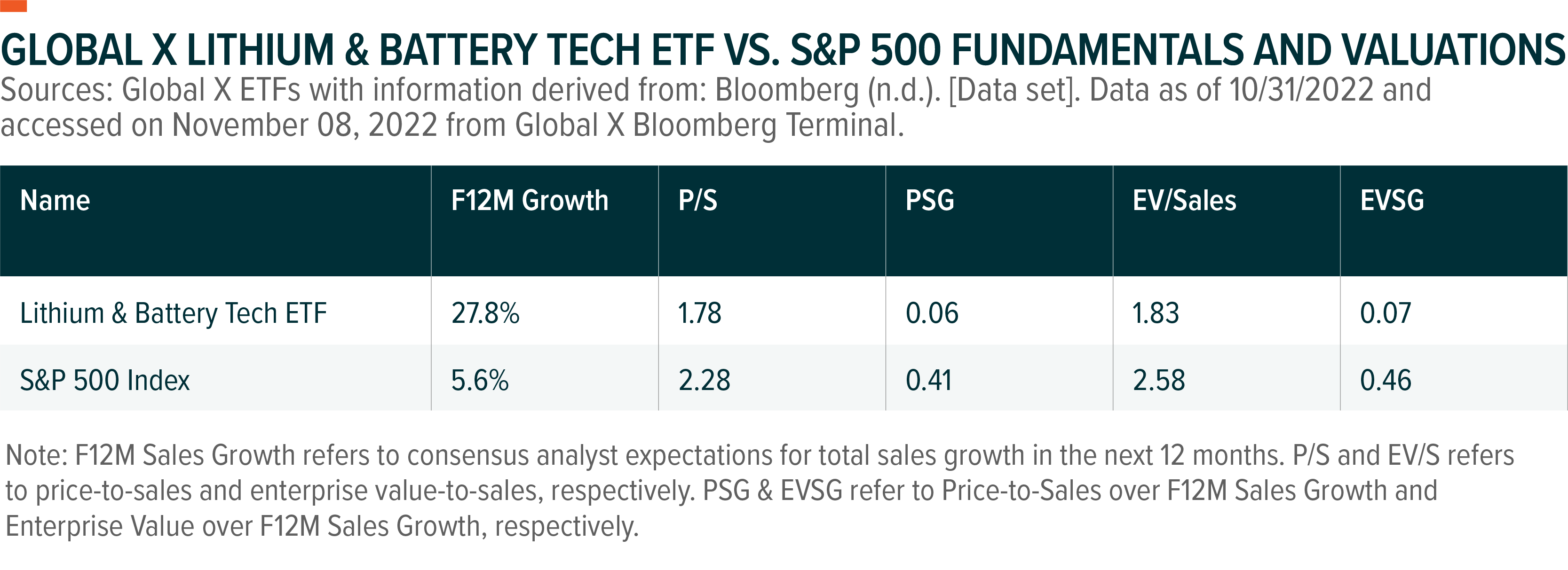
Cybersecurity
The cybersecurity theme has become not just a growing investment theme but a necessity for companies and nations alike as the world becomes more interconnected via the cloud and other digital means. Throughout 2022, cyber-attacks continued to increase even as the world economy shifts to a post-COVID world.5 This has resulted in governments citing national security risks and President Biden signed 2 new pieces of cybersecurity legislation in the U.S. in June 2022.6 This has led to the continuing growth of cybersecurity firms overall. Top-line consensus estimates have continued to trend upward when analyzing the underlying holdings found within the Global X Cybersecurity ETF (BUG).
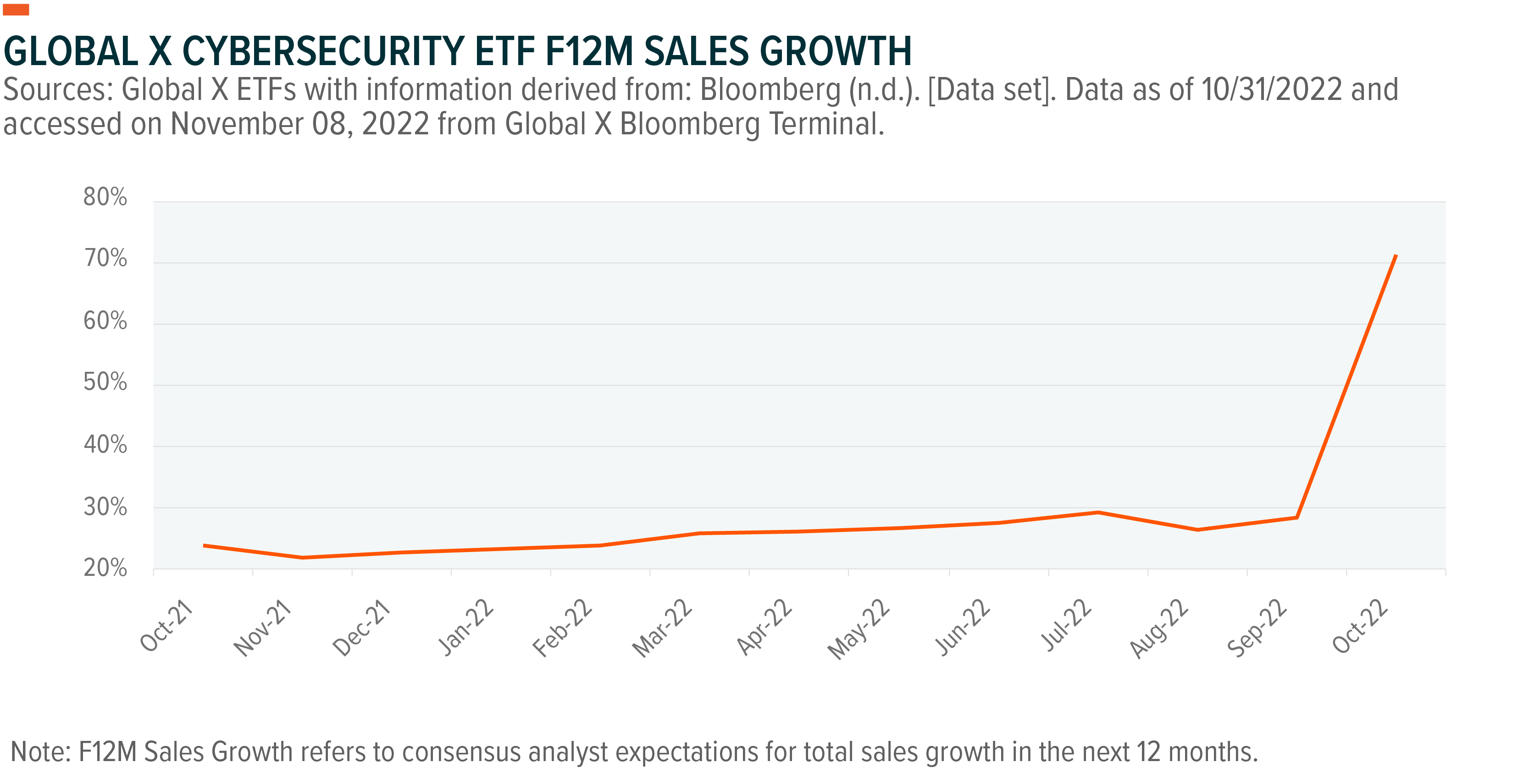
Blockchain
The potential of blockchain technology has seen rising institutional adoption that can continue to grow as companies start to explore more business purpose use cases. This has led to large and small firms alike looking to utilize blockchain technology within current operations, something we explored more here. With recent valuation resets occurring market wide, the blockchain theme, seen through the lens of the underlying holdings found within the Global X Blockchain ETF (BKCH), is still projected to experience above-market revenue growth while exhibiting favorable valuation characteristics.
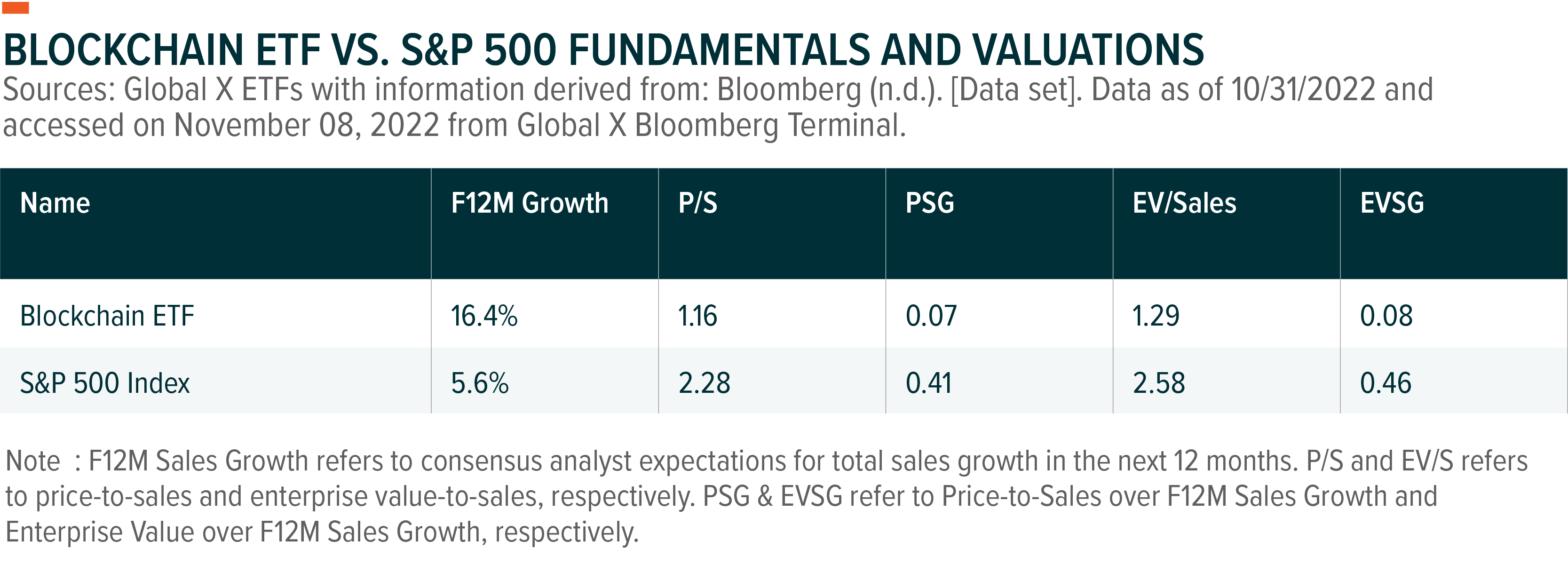
Potential Income Opportunities
Preferred Stocks
This “hybrid” asset class currently presents a potential opportunity given the recent hawkish pivot from the Federal Reserve in 2022. With a 10-Year treasury yield of 4.10% as of 10.31.2022, taking more credit risk via the preferred stock market may present an opportunity to increase portfolio yield while reaping the potential benefits of qualified dividend income tax treatment of distributions that is typically associated with this asset class.7 Variable rate and floating rate preferred stocks provide an opportunity to obtain similar attributes with an added, potential benefit of resetting coupon payments to provide a lower duration investment relative to fixed rate preferred stocks. The opportunity is also present in current valuations and as of 10.31.22, 82.25% of preferred stocks within the Global X U.S. Preferred ETF (PFFD) were trading at a discount to par value vs. 2.45% 1 year previously.8 On the other hand, as of 10.31.2022, 75.76% of the preferred stocks within the Global X Variable Rate Preferred ETF (PFFV) were trading at a discount to par value vs. 10.85% 1 year previously.9
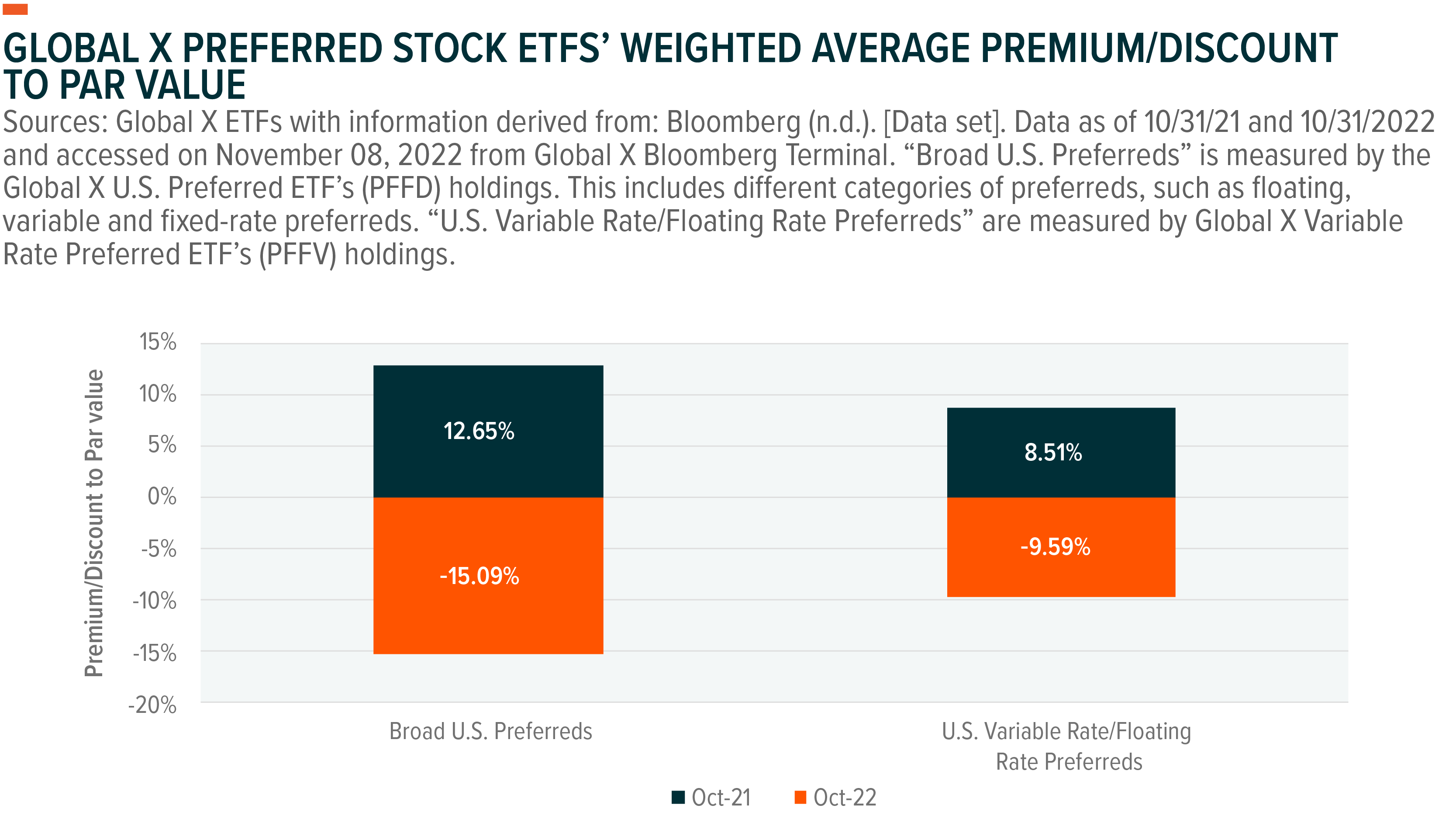
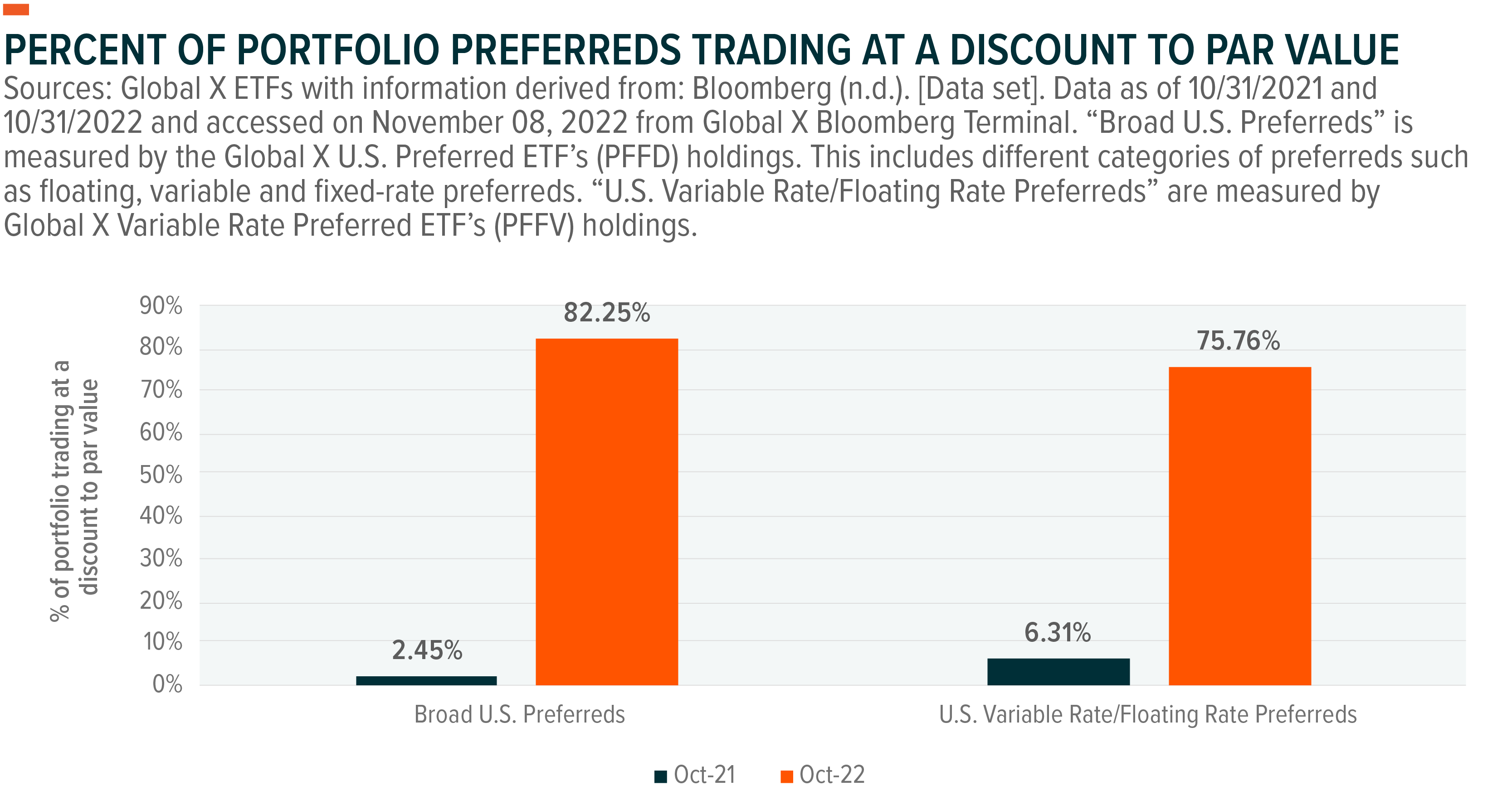
Covered Calls
Covered Call strategies with major equity indices as the underlying asset have the potential to monetize current levels of volatility in those equity markets. Through options premiums garnered by selling covered calls, this strategy generates income from sources that are not associated with traditional income-oriented investments such as fixed income securities, whose income is mainly determined by the level of interest rates, and dividend equities, whose income is affected by the financial health of the company issuing the stock. On the other hand, covered call strategies generate income from call option premiums which are historically correlated with the underlying asset’s level of implied volatility.
Options premiums received by the Global X Covered Call ETF suite continued to stay elevated in 2022 as implied volatility levels on their reference indices have increased above historical 5-year averages.10 Options premiums may stay elevated if that backdrop persists and offers the potential for a covered call strategy to outperform its reference index during periods of uncertainty where equity markets are either flat/choppy or declining in value. Global X’s covered call strategies – on the Nasdaq 100 (QYLD), S&P 500 (XYLD), Russell 2000 (RYLD), and the Dow Jones Industrial Average (DJIA) – cover 100% of their equity portfolios with “at-the-money” covered calls in an effort to maximize the potential premiums received from the aforementioned trends. Our Covered Call & Growth strategies, which are structured by writing calls on 50% of the index’s value, can offer similar potential benefits as well as taking part in half of its reference index’s upside should markets begin to recover from their current, lower levels. These strategies on the Nasdaq 100 (QYLG), S&P 500 (XYLG), and the Russell 2000 (RYLG) also offer income potential though through the call writing.
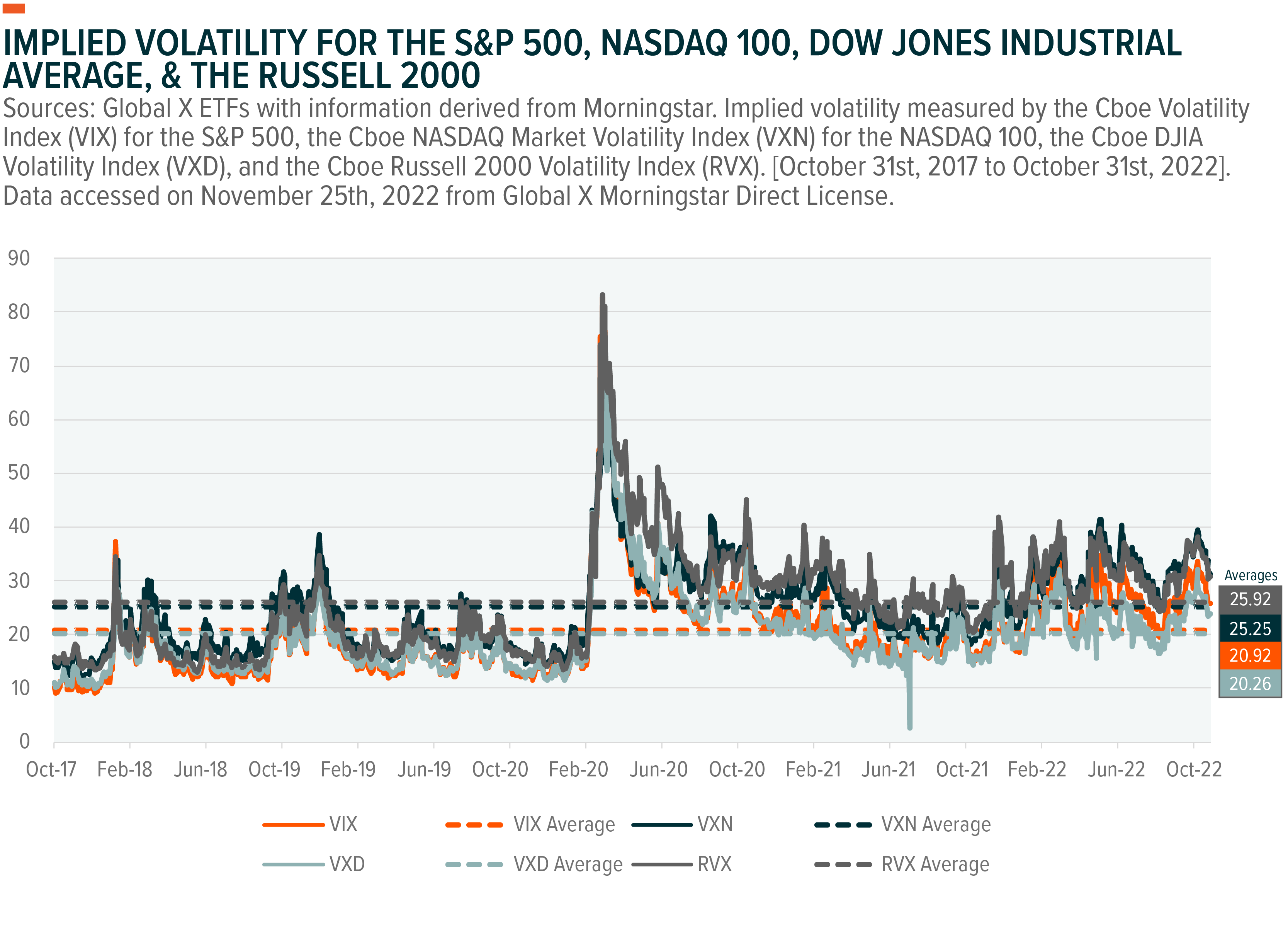
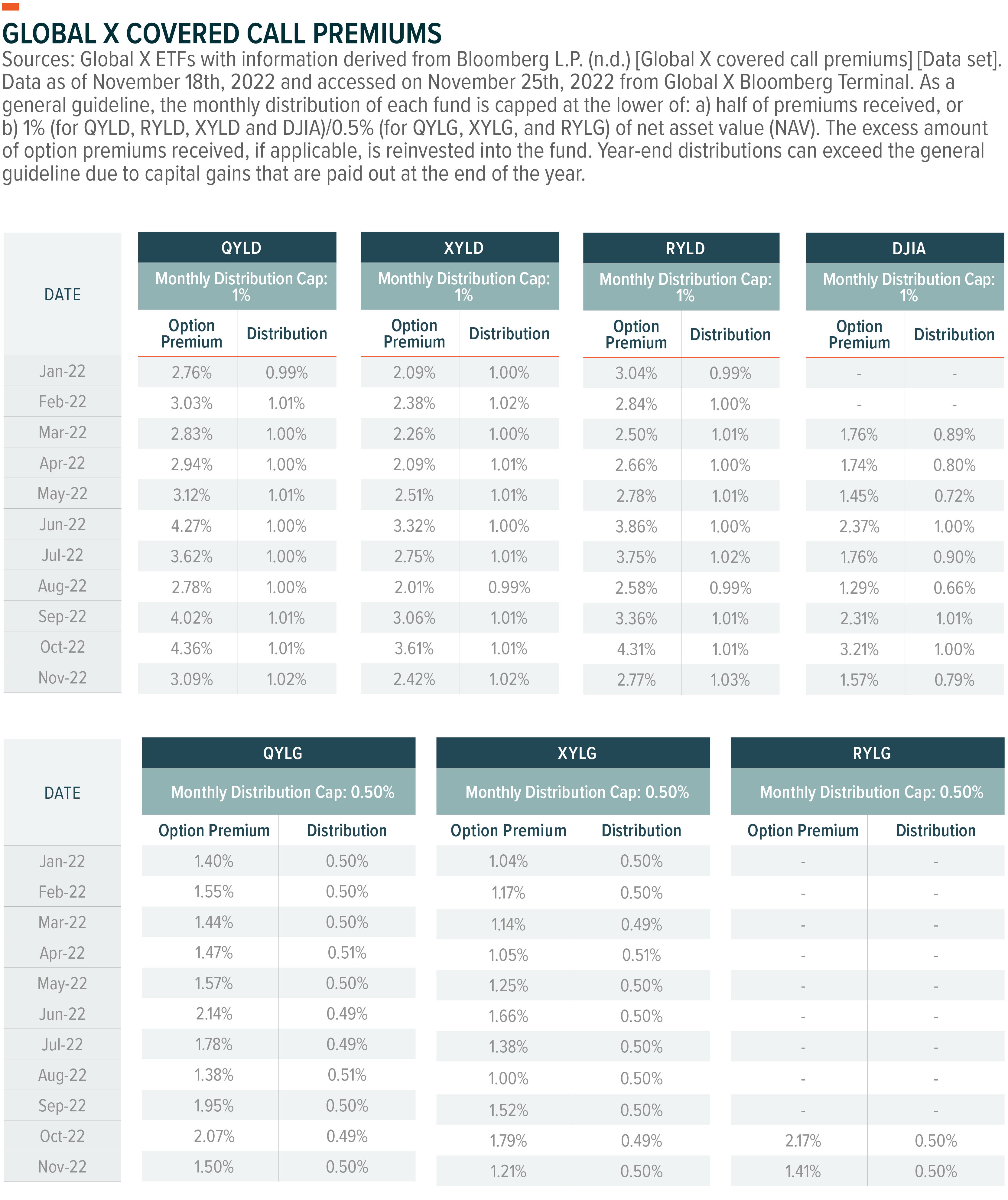
Dividends
Dividend-Equity Strategies have been exceptionally popular throughout 2022 as this segment of the U.S.-Listed ETF market has seen roughly $58 Billion in net new assets, as of 10.31.2022. Year-to-date, the net flows from dividend equity ETF strategies have surpassed all other equity strategic beta categories in flows.11 U.S. dividend equity strategies, in particular, present a potential opportunity and our Investment Forum team currently exhibits an overweight regional macro view for U.S. equities overall. A U.S. Quality Dividend strategy, such as the Global X S&P 500 Quality Dividend ETF (QDIV), offers equity income investors the potential to increase portfolio yield while an additional quality factor screen taken provides potential exposure to companies with strong and/or strengthening balance sheets. A Low Volatility Dividend strategy on U.S. equities, such as the Global X SuperDividend® U.S. ETF (DIV), provides exposures to high dividend paying companies that have historically exhibited lower levels of volatility than the broader market. This may provide access to mature companies who have consistently paid highdividends, some of which are well-known company brands such as Kellogg Co., Kraft Heinz Co., International Business Machines, and 3M. Dividend investing tends to offer exposure to the value factor as well and both aforementioned dividend strategies are still showing attractive valuations relative to broader U.S. Equities notated by the S&P 500 index.
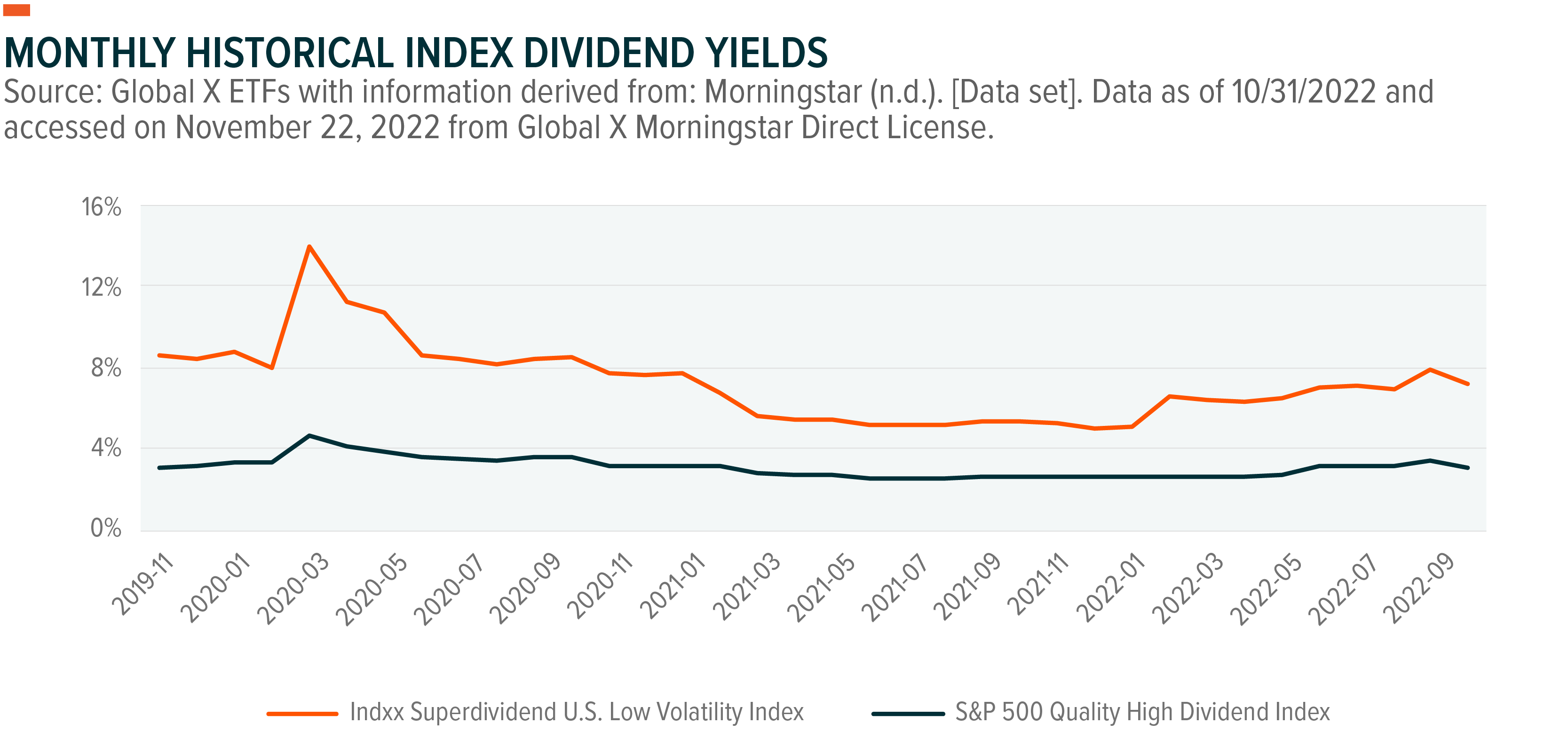
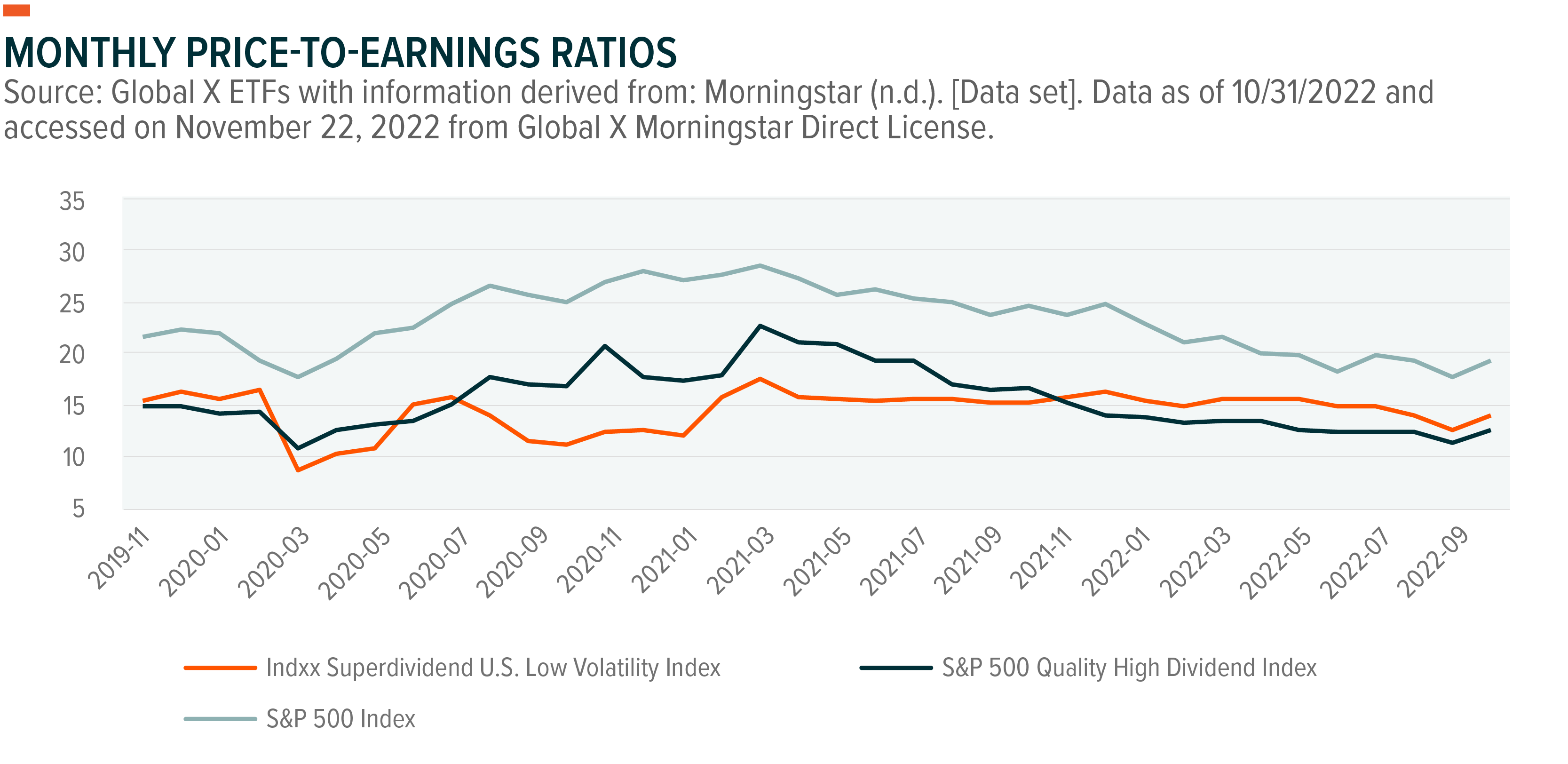
Conclusion
It’s been a “bumpy ride” for major market indices in 2022. Equity and fixed income markets alike have declined in significant value throughout the year which has resulted in investors re-evaluating their current portfolio allocations to ensure their preparedness to meet goals moving forward. Tax-loss harvesting can be a useful tool for an investor in this re-evaluation process and offers the ability to potentially lower tax bills. Across the thematic & income ETF landscapes, Global X has multiple strategies that can potentially stand to benefit from market trends moving forward and supplement portfolio allocations during this re-evaluation process.
Related ETFs
LIT: The Global X Lithium & Battery Tech ETF invests in the full lithium cycle, from mining and refining the metal, through battery production.
BUG: The Global X Cybersecurity ETF seeks to invest in companies that stand to potentially benefit from the increased adoption of cybersecurity technology, such as those whose principal business is in the development and management of security protocols preventing intrusion and attacks to systems, networks, applications, computers, and mobile devices.
BKCH: The Global X Blockchain ETF seeks to invest in companies positioned to benefit from the increased adoption of blockchain technology, including companies in digital asset mining, blockchain & digital asset transactions, blockchain applications, blockchain & digital asset hardware, and blockchain & digital asset integration.
PFFD: The Global X U.S. Preferred ETF invests in a broad basket of U.S. preferred stocks, providing benchmark-like exposure to the asset class.
PFFV: The Global X Variable Rate Preferred ETF invests in a broad basket of U.S. variable rate preferred stocks, providing benchmark-like exposure to the asset class.
QYLD: The Global X Nasdaq 100 Covered Call ETF follows a “covered call” or “buy-write” strategy, in which the Fund buys the stocks in the Nasdaq 100 Index and “writes” or “sells” corresponding call options on the same index.
QYLG: The Global X Nasdaq 100 Covered Call & Growth ETF follows a “covered call” or “buy-write” strategy, in which the Fund buys the stocks in the Nasdaq 100 Index and “writes” or “sells” corresponding call options on approximately 50% of the value of the portfolio of stocks in the same index.
XYLD: The Global X S&P 500 Covered Call ETF follows a “covered call” or “buy-write” strategy, in which the Fund buys the stocks in the S&P 500 Index and “writes” or “sells” corresponding call options on the same index.
XYLG: The Global X S&P 500 Covered Call & Growth ETF follows a “covered call” or “buy-write” strategy, in which the Fund buys the stocks in the S&P 500 Index and “writes” or “sells” corresponding call options on approximately 50% of the value of the portfolio of stocks in the same index.
RYLD: The Global X Russell 2000 Covered Call ETF follows a “covered call” or “buy-write” strategy, in which the Fund buys the stocks in the Russell 2000 Index (at times by exposure to the Vanguard Russell 2000 ETF), and “writes” or “sells” corresponding call options on the Russell 2000 Index.
RYLG: The Global X Russell 2000 Covered Call & Growth ETF follows a “covered call” or “buy-write” strategy, in which the Fund buys the stocks in the Russell 2000 Index (at times by exposure to the Vanguard Russell 2000 ETF), and “writes” or “sells” corresponding call options on the Russell 2000 Index representing approximately 50% of the value of RYLG’s portfolio.
DJIA: The Global X Dow 30 Covered Call ETF follows a “covered call” or “buy-write” strategy, in which the Fund buys the stocks in the Dow Jones Industrial Average (also known as the Dow 30 Index) and “writes” or “sells” corresponding call options on the same index.
DIV: The Global X SuperDividend® U.S. ETF invests in 50 of the highest dividend yielding equity securities in the United States.
QDIV: The Global X S&P 500 Quality Dividend ETF invests in U.S. equity securities included in the S&P 500® Index that rank within the top 200 of the index’s universe by both quality score and dividend yield.
 Global X Research Team
Global X Research Team